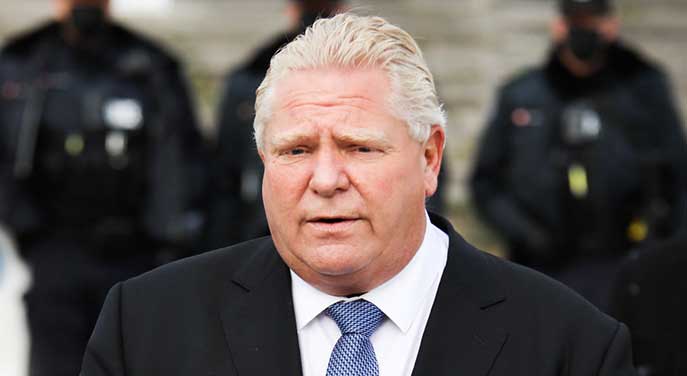 The yellow vests demonstrations across the Atlantic against climate change-driven fuel taxes offer Ontario Premier Doug Ford yet another reason to congratulate himself on repealing Ontario’s carbon tax.
The yellow vests demonstrations across the Atlantic against climate change-driven fuel taxes offer Ontario Premier Doug Ford yet another reason to congratulate himself on repealing Ontario’s carbon tax.
Less reassuring, however, is the speculation that he intends to introduce a measure similar to the Australian Emissions Reduction Fund (ERF). A sop to the leftists within the Australian coalition conservative parties, this provides funding for a reverse auction where, instead of taxing all emissions (with the revenues theoretically being used to compensate those paying the taxes), the government invites bids from firms for the abatement measures they will undertake.
Australia’s ERF is part of a suite of measures in place, including:
- renewable energy subsidies that cost about $3 billion (all figures in Australian dollars unless otherwise stated) a year;
- direct federal investment through the budget of perhaps $500 million a year plus a similar amount for various state and territory programs;
- regulations on light bulbs, buildings, white-goods, etc., designed to reduce energy;
- a government $10-billion Clean Energy Finance Corp.
Most ERF projects are agriculture based. The government proudly boasts, ‘We are on our way to planting 20 million trees by 2020.” Other agriculturally based measures include revegetation, carbon fertilisation of the soil and, ironically, burn-offs to reduce risks of major fires.
Some eligible activities involve energy savings through the replacement of older equipment and projects for savings of fugitive emissions from mining.
Ostensibly, the ERF total government funding is $2.55 billion, about $400 million per year until it supposedly closes in 2020. But as usual with government programs, there are strong pressures to extend it. The program has a 236-million-tonne CO2 equivalent abatement task over its life. Over time, that’s estimated at about three per cent of Australia’s annual 550 million tonnes of emissions.
Compared to alternatives, the scheme’s cost effectiveness, as reported by the government, has been quite high at $13 to $15 per tonne of CO2 equivalent. That’s a considerable reduction on the $24 per tonne carbon tax on electricity that was repealed by the incoming government in 2013.
It’s better value still than the tax rate of $US190 per tonne, which the Paris-based International Energy Agency (IEA) has estimated to be needed to stabilize emission to achieve a global temperature increase at under 2ºC.
And it’s almost trivial compared with the $US135 per tonne tax rate required by 2030 to keep global warming under 1.5ºC, according to the Intergovernmental Panel on Climate Change, which set the scene for the 2015 Paris agreement on climate change.
The main problem with all this expenditure is that the effect is insignificant, hence wasteful given that few countries are committed to abatement schemes. Comprising only one-fifth of global emissions, these including the European Union, Japan, Korea, Canada and Australia. Any expenditures are therefore wasteful and most will detract from the competitiveness of the countries making them.
That aside, the policies suffer from the major shortcomings that subsidies are provided to those who would have undertaken the activity anyway. It’s easy to see that some of the tree growing projects and carbon soil enrichment and modernization of energy equipment would have gone ahead irrespective of the subsidy. New technologies and new farming techniques are almost invariably more efficient in terms of energy use than those they replace. Similarly, firms will present new projects for capturing gas to generate electricity, replacing a leaking boiler or agreeing not to clear land when that was always their intent.
Moreover, it’s likely to become increasingly difficult to attract new projects as the low hanging fruit will volunteer itself earliest.
Add to these the inevitable mistakes in selecting the qualifying project categories and considerable bureaucracy in assessing the projects and verifying they abide with the contractual provisions on an ongoing basis.
Ford’s smarter alternative would be to just bite the bullet and abandon the pretence of abiding by the flawed Paris agreement and its narrative that carbon dioxide is pollution, especially since Canada’s competitor to the south is aggressively benefiting and moving forward with its energy dominance/abundance program.
All Paris-obedient nations will see a massive loss of competitiveness as energy policies of U.S. President Donald Trump prevail.
Alan Moran works in the field of the economics of regulation and is a research associate with Frontier Centre for Public Policy. His latest book is Climate Change: Treaties and Policies in the Trump Era. He lives in Melbourne, Australia.
The views, opinions and positions expressed by columnists and contributors are the author’s alone. They do not inherently or expressly reflect the views, opinions and/or positions of our publication.

